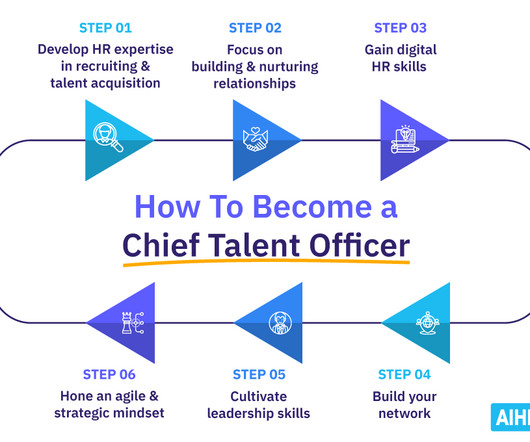Chief Talent Officer: Everything To Know About This Role
Analytics in HR
FEBRUARY 27, 2023
Liaising with the management team, the chief talent officer sets the strategic vision and priorities for the company’s staffing operations. The chief talent officer creates processes to optimize hiring, build relationships for candidate pipelining and succession planning, and manage short and long-term staffing requirements.



























Let's personalize your content